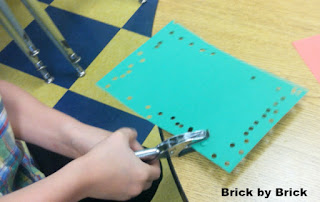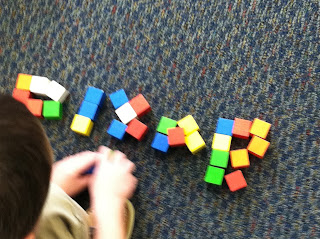Chapter 1 - Play Isn't a Luxury. It's a Necessity.
This first chapter made me nod throughout. Let's start with this quote:
In their support of play, the authors show that play supports Common Core standards or any other standards that need to be addressed. Play is the child's own method of instruction - the way that children teach themselves. Teachers can use this child-directed method to teach all kinds of concepts and meet standards."There is an argument in the world that suggests that play can happen only when work is done, yet children show us time and time again that play is the way they work."
Rigor is another current educational focus. The authors say that play fits right into rigor...the true meaning of rigor, that is. "Because play is safe and familiar, children feel free to take risks and try on new learning." Children will push their learning to the edges of their ability, rigorously trying to master what they are doing.
Another great quote:
I see more focus when children are exploring what they have chosen to pursue. The freedom to try and fail and try again encourage kids to push their ideas. Play allows children of different abilities and strengths to be successful...and to learn from others."The thinking that occurs in play fits the definition of work (active engagement toward achieving a goal) and often provides impetus to continue working long after the official 'play' time is done."
I've watched kids try something, observe others ideas, and attempt new things without any intervention or comment from me. I've heard kids use a wide range of words to express their thinking. Play is truly work - and rigorous work at that.
And that's just the first chapter of this book. I'm excited about reading further and learning more about how play helps children learn deeply.





